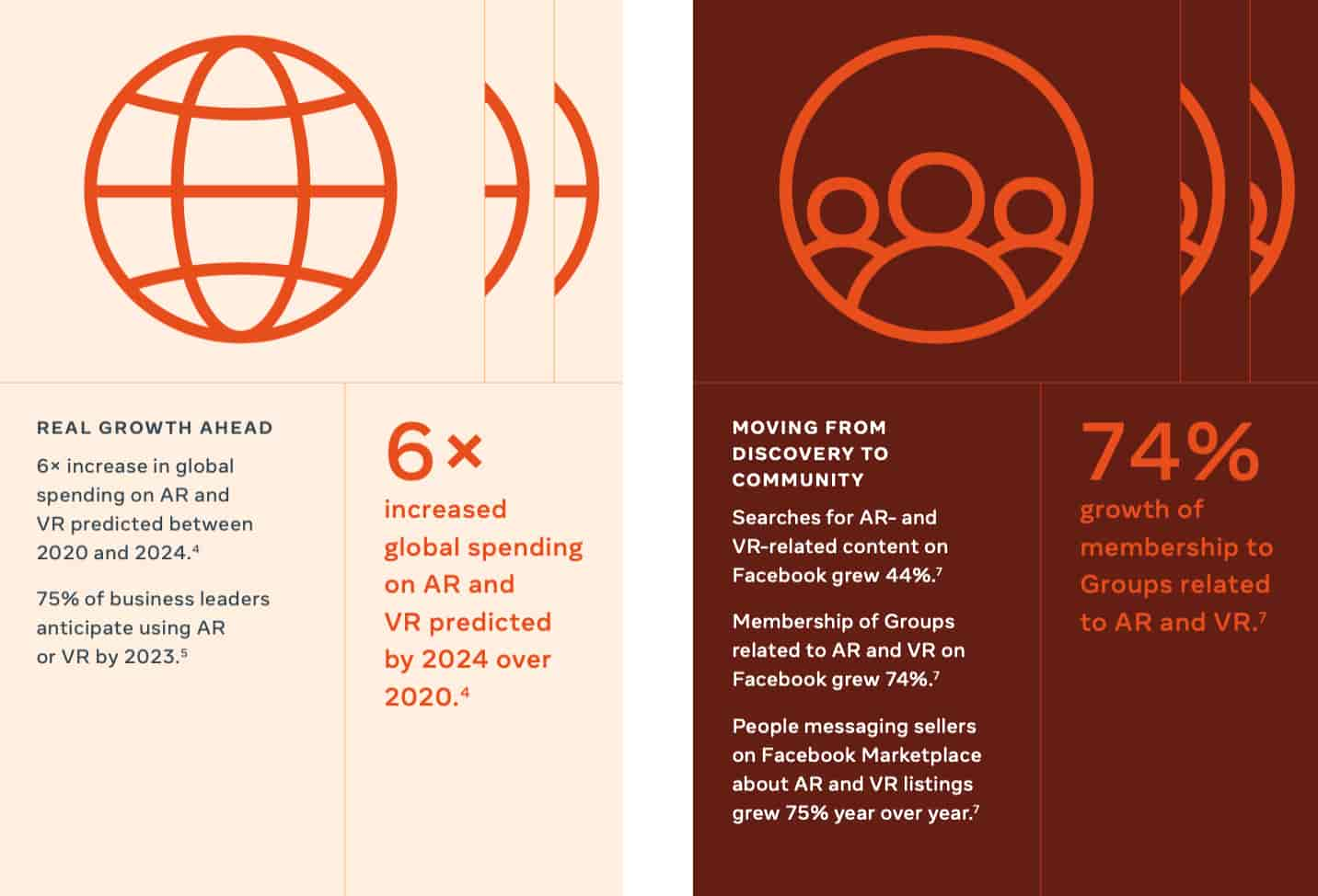
AR continues to prove it’s value and efficacy as a shopping tool. Though its admittedly taking longer to lift off the ground in terms of mass-consumer adoption, it’s achieving several small wins. That includes steady growth in user-traction as well as brand-marketer adoption.
The former includes usage figures that continue to roll out from AR leaders. For example, Snap reports 200 million daily active AR users, while Facebook reports 600 million monthly AR users. Google Lens — another form of AR shopping — is used 3 billion times per month.
On the brand marketer side of the equation, we’re likewise seeing “camera commerce” proof points. These include case studies, as well as aggregate performance metrics. For the latter, AR can boost conversions by as much as 300 percent and reduce returns by 40 percent.
To further validate much of the above, Facebook released a recent report on AR’s growth metrics in a shopping/commerce context. Containing a mix of consumer surveys and revenue projections, we’re featuring it for this week’s Data Dive, with takeaways and strategic implications below.
Proof Points
So what did Facebook’s report uncover? Here are the hightlights we’ve extracted for AR Insider readers.
– More than one billion people have experienced AR (not necessarily active users) across Facebook’s Spark AR platform. This includes News Feed, Messenger, Portal & Instagram.
– 86 percent of users report that they are open to branded AR experiences.
– 78 percent of surveyed consumers say AR is a fun way to interact with brands; and 74 percent believe AR can bridge the gap between online and offline.
– Searches for AR and VR-related content on Facebook grew 44 percent year-over-year.
– Membership in Facebook groups related to AR and VR grew 74 percent year-over-year.
– Instances of users messaging sellers on Facebook Marketplace regarding AR or VR listings grew 75 percent year-over-year.
– English-language searches on AR and VR within emerging markets grew 2x that of mature economies year-over-year, signaling geo-specific opportunities.
– Looking forward, 75 percent of business leaders anticipate using VR and AR to boost their marketing and commerce strategies over the next two years.
– In monetary terms, this adoption translates to a 6x increase in brand spending in camera commerce.

Centerpiece
Building from the above data, Facebook continues to develop its AR playbook. As it does that, the centerpiece is increasingly Instagram. Though News Feed and Messenger are fitting places for AR, Instagram’s one-billion active camera-forward users are more naturally aligned.
To expand on that alignment, social sharing is core to Instagram which breeds AR lens virality, just like it does on Snapchat. Instagram also continues to cultivate shoppable content. This makes eCommerce and AR — already natural bedfellows — on a collision course at Instagram.
Instagram is earlier in its AR lifecycle, so the above will play out similar to how it did at Snap and at Facebook’s other properties. This progression includes new AR formats, user acclimation, community lens creation, and monetization. The latter is where brands pay to distribute AR lenses.
So far, this has all unfolded to some degree as Instagram works with fashion retailers to integrate AR product try-ons as part of its in-app transaction features. These integrations are logical, as Instagram has become a place for consumers to discover products and transact.
Panning back, Facebook has several tracks for spatial computing, which will eventually converge. It has primary VR ambitions to connect the world in more immersive ways (and monetization therein); AR glasses, Live Maps and deep XR research; and nearer-term mobile AR lenses.
The latter may be the least sexy of the lot, but it’s a key step to get users and developers spatially acclimated. That will prime the next era of headworn experiences that Facebook is aiming for. But in the meantime, mobile AR is generating real traction and revenue today.

